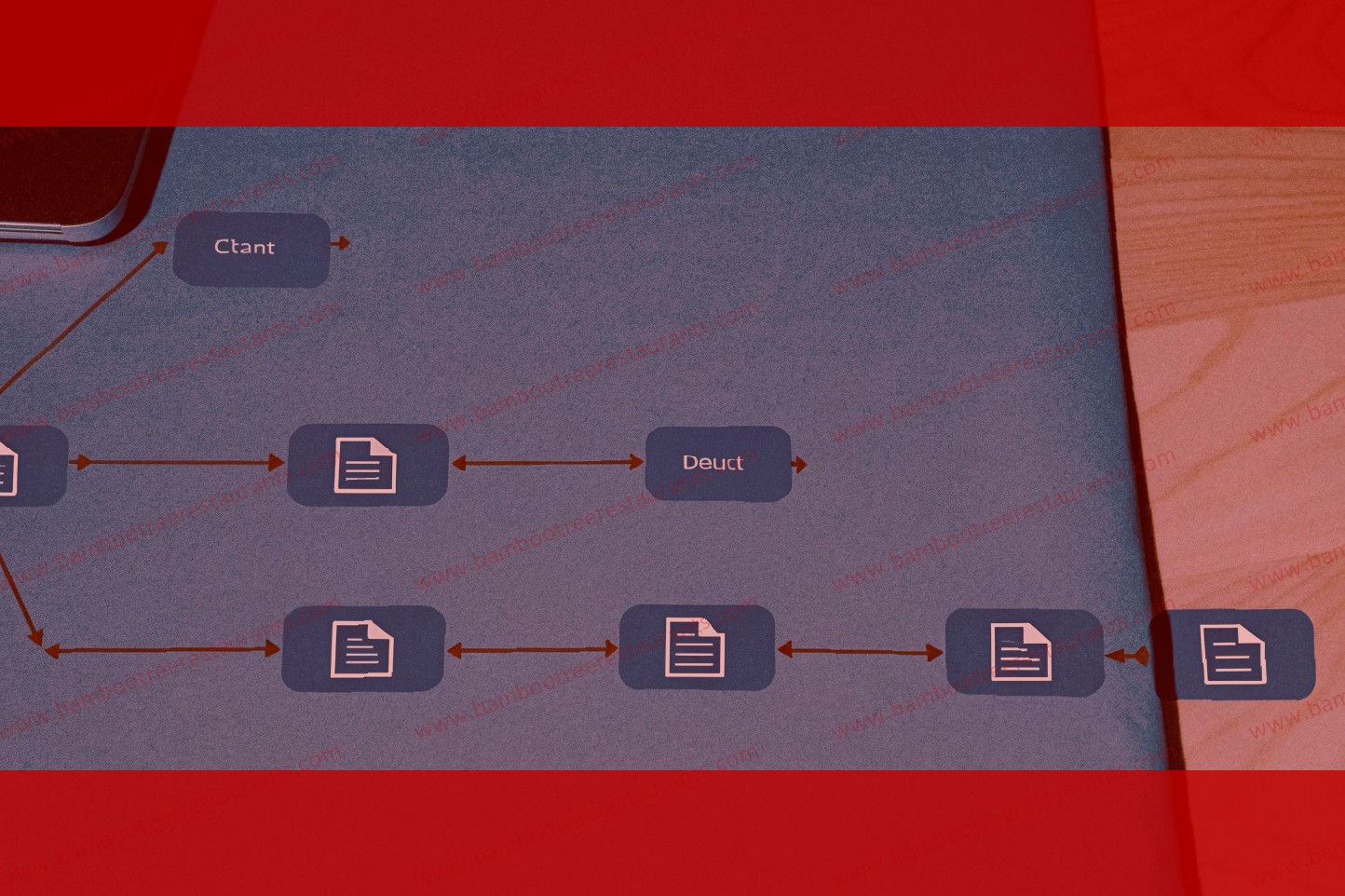What are Legal Workflows?
Understanding legal workflow is the first step to more efficient law firm operations. Legal workflows encompass a systematic approach that encompasses the journey of a case through each phase of its lifecycle. From client intake to case closure, it involves standardizing the path a matter follows.
Thinking about matters in terms of structured processes helps firms identify problems early, before inefficient practices spiral into inefficiency. A firm’s workflow can be broken down into individual steps. A firm can look at the entire matter as a process. Each stage of a matter becomes its own node on the process map, creating an organized picture of the industry’s best practices.
Because each matter follows a structured path , a firm can build their work practices around it. This lowers the possibility of variance. It helps firms monitor performance and improve performance over time. A legal workflow should define the what, who, when, and how. What work needs to be done? Who’s doing the work? When will they do it? How will we know the work has been completed? Creating a checklist of the case’s tasks can also be helpful.
A profitable legal workflow is specific. It is standardized. And it is transparent. When lawyers, staff, and clients understand how things get done, they can deliver on their promise with more efficiency and confidence.
Legal Workflow Components
The first component is task delegation. Client matters have a myriad of tasks; some are unique, and some are repetitive and routine. An effective legal workflow identifies these tasks and systematically assigns individual responsibility for them. Elements include who needs to be in the loop, who must be notified whenever a task is ready, what other people have responsibilities for, and what notify people if there are exceptions or issues.
The next component is document management. In all major law firm practice areas, documents are important and prevalent. Legal workflows identify the needed document and automatically populates templates with information from your current case management system. The final components are automated notifications. When certain conditions or situations exist, the system will send automated reminders and alerts to lawyers, paralegals, and administrative staffers.
Example #1: Client Intake Process
A typical client intake workflow might start with the opportunity to acquire a new lead, or a potential new client saying "hello" to a firm. From there the workflow could play out something like this:
Email
You may receive an email from a potential client asking if you handle their type of case.
Web Form
You might have a contact form on your website that captures the same information as the email and forwards it to the appropriate person in your firm.
Telephone
The client might call you on the phone and you could add the information into a database manually using a system like Practice Al for example. In larger firms you might have an intake and screening department that is assigned to handle new leads and will be gathering the lead information (essentially acting as a legal sales department) and guiding the client through the rest of the workflow.
Lifting Off the Workflow – Checklist, Tasks and Firm Scripts
At this point, the legal workflow has lifted off.
It might look something like this:
- Please check to see if we have represented this person before because if we have we will need to:
- Check the conflicts process to avoid conflicts of interest for both parties.
- Once we have cleared conflicts we can ask initial questions so we can assign the case to the correct attorney to handle the matter.
- Once we have determined the appropriate attorney that would be a good fit for the case, we send the checklist to the attorney to accept the case.
At this point, the person who has been assigned the tasks or checklist will have a set of tasks or ‘to-do’s’, and will be responsible to complete them within an assigned time period. Typically, this would be within 24 hours of the lead entering the system.
A lead that reaches you by telephone may be less likely to be left unattended or allocated than a lead that arrives by email.
Onboarding, Appointment and Kickoff
Once the attorney has accepted the lead, the onboarding, appointment and kickoff of the matter can proceed. With the automated workflow, no lead is left behind; it is up to you how fast the leads move through the system. But by having a system involved that ensures that each lead and matter is attended to by the right person, at the right time you can help ensure that your law firm can scale and grow and your business succeeds.
Example #2: Document Review Process
A common use of legal process automation in the context of law firm workflow is in the assignment and review of legal documents. The typical stages involved here are the assignment stage where the administrative staff or junior attorneys assign documents to the appropriate reviewers, the review stage where attorneys comments on the documents, and the approval stage where the comments are approved or sent to the client. In the document review example, the law firm can define the steps as follows:
Review Process
- Prior to sending documents to review, assign the documents to the appropriate persons.
- Each of the assigned persons reviews the document and adds their comments (if any).
- If all of the assigned reviewers approve the document (and not send comments) then us an approval mechanism such as email or another notice to notify the person who assigned the review that the review was successful.
- If one of the reviewers sends comments back, then the document must be updated in accordance with those comments.
- Ratify the changes to the documents and treat it as approved as in step 3 above.
Thus a law firm using an automated workflow would first select the documents that need to be assigned to reviewers. The firm would then plug in relevant metadata for the assignment. This data can include things like the parties involved, the date of the document, the parties who need to review, and the due date for the review. Based upon this metadata, the document review system can decide:
Step 3. Freely assign the reviewers as above
Step 4. Send the document to review to all of the persons that meet the profile.
Example #3: Litigation Management Process
Litigation law is perhaps the most complicated and unpredictable of legal practice. Not only does it involve strict deadlines for filing and response, pleadings to file and motions to make, but it also requires extensive documentation and collection of all evidence, from witness testimony to physical exhibits. All this, on top of the easing movement from physical documentation to electronic documentation, means that litigation is ripe for inefficiency and lost resources. One of the areas that causes the most grief in litigation are the early stages, when the involved parties are establishing the facts of a case, cataloging and supplementing evidence , and ensuring that they are on top of all deadlines. The following workflow streamlines each of these processes: Lawyers meet with the client to discuss the case and determine the legal strategy. A checklist is created for all of the upcoming tasks, including collecting all evidence and action items, such as whether any motions or pleadings need to be made. If possible within the firm or practice group, an outline of the case is created. Tasks are assigned to the paralegal and associates assigned to the case. Deadlines are created and recorded in a central calendar that all involved lawyers can access and can set notifications for themselves to ensure nothing is missed. Many of the early-stage tasks can also be automated; for example, using dictation software to automatically generate motions or briefs.
Leveraging Technology for Legal Workflows
As technology continues to advance, its role in law firm workflows is becoming increasingly more significant. With the use of software tools, firms can automate repetitive tasks like sending and responding to emails and filing court documents, leaving attorneys with more time to focus on serving clients.
For example, email rules are a great way to automate communication within a team of attorneys. Rules can sort incoming emails based on sender, make changes to the subject line or move the email to a pre-specified folder automatically. Creating email rules can improve collaboration by making it easier to forward relevant emails with co-counsel or to share information with clients.
Email rules can enhance client communication as well. For instance, an email rule can automatically notify clients when a timeline or court date has been missed so that a firm secretary doesn’t have to manually send out a standard email at the end of each month. Plus, with the Aderant mail tool, all emails can also be automatically filed so that attorneys are never exposed to the risk of looking unresponsive to a client.
We also recommend using document automation software to make creating standard forms more efficient. We’ve found that when offices manually create documents, there are often typographical errors, and tracking down the right versions can be a hassle. Document automation improves efficiency by saving content such as precedents, standard clauses and boilerplates; making it easy to find the right content quickly and for the system to recommend better clauses in the future using machine learning. It’s also easier to make changes to only one file using text replacement/regular expression search capabilities, because you can edit the template, and you can increase accuracy by using search for bills in automated ways. The entire process from creating a new document to sending it out for signature can be accomplished in a single click – drastically reducing the time needed (we’ve saved over 35,000 hours of work in the last few years) and improving the client experience. With document automation, each document is standardized and perfectly accurate, allowing attorneys to focus on more value-added tasks.
Technology can certainly enhance legal workflows and help teams perform at their highest potential. But new software needs the right parameters and rules to be most effective. This is why we also recommend evaluating vendor software and integrations on both level of customizability of workflow rules and adaptability of the software for mobile devices for optimal use across the firm without excessive human resource expenditure on training.
Legal Workflow Best Practices
Optimizing legal workflows requires a thoughtful approach to analyzing current practices, creating new processes, training staff, and then continuously assessing and improving those processes. A systematic approach is essential to ensure that your firm is maximizing efficiency and meeting client needs.
The first step in the process is to identify the areas of your operations where workflows can be optimized. This may involve a review of procedures in your most demanding practice areas, or the identification of steps that are duplicative or time-consuming. It is also important to consider your target client base, as well as the types of matters you typically handle. Speak with your lawyers, staff, and clients as you analyze workflows to ensure that they are practical, logical, and effective.
The next step is to create a new or revised workflow plan for your firm. A workflow plan is a written document that details how workflow should occur. It should include the steps involved in the process, as well as who is responsible for each step. The plan should also include timeframes for completion of each step, and any relevant templates, tools, or forms.
Once you have created a workflow plan, it is time to train and educate your staff. This is a critical step in ensuring that new workflows are understood and followed. Have meetings with staff to discuss the new workflows, and distribute written descriptions or guidelines. You can also provide training sessions or e-learning courses to help staff understand and implement the new procedures.
It is important to continue to monitor an optimization initiative in order to ensure that it is effective. Regularly review workflows for bottlenecks or inefficiencies, and make adjustments as necessary. It can also be helpful to gather feedback from staff and clients on an ongoing basis, so that potential obstacles can be identified and addressed. This continuous improvement process will help you to maintain an optimal legal workflow over time.
Conclusion: Advantages of Optimized Legal Workflows
Effectively optimized legal workflows can have a dramatic impact on whether or not a law firm can succeed in today’s competitive marketplace. By streamlining tangible processes that allow for a law firm to operate more efficiently, you can save time, increase client satisfaction and even improve overall employee morale. A law firm that continues to operate on outdated processes (no matter how well the firm has become accustomed to using those processes) risks closing its doors to its competitors.
The bottom line is that these days, legal clients demand more from law firms than ever before. Clients are both increasingly sophisticated in their understanding of the law and increasingly impatient with a law firm that can’t deliver its services in an efficient and effective manner . With the right approach to optimizing legal workflows, clients and staff alike can experience the benefits of less stress and greater efficiency in how their law firm performs its day-to-day operations.
In addition to the benefits of an optimized legal workflow, there are other important reasons that law firms should invest in the optimization of their processes. This includes creating willing and able advocates in your existing client base, improving staff morale, providing a more valuable tool to outside stakeholders and providing an opportunity for a more effective work/life balance for all employees. With fewer "fires" to put out and fewer lines of communication to manage, the healthy rhythms of a well-run law firm can, instead, become something to be anticipated rather than avoided at all costs.




+ There are no comments
Add yours